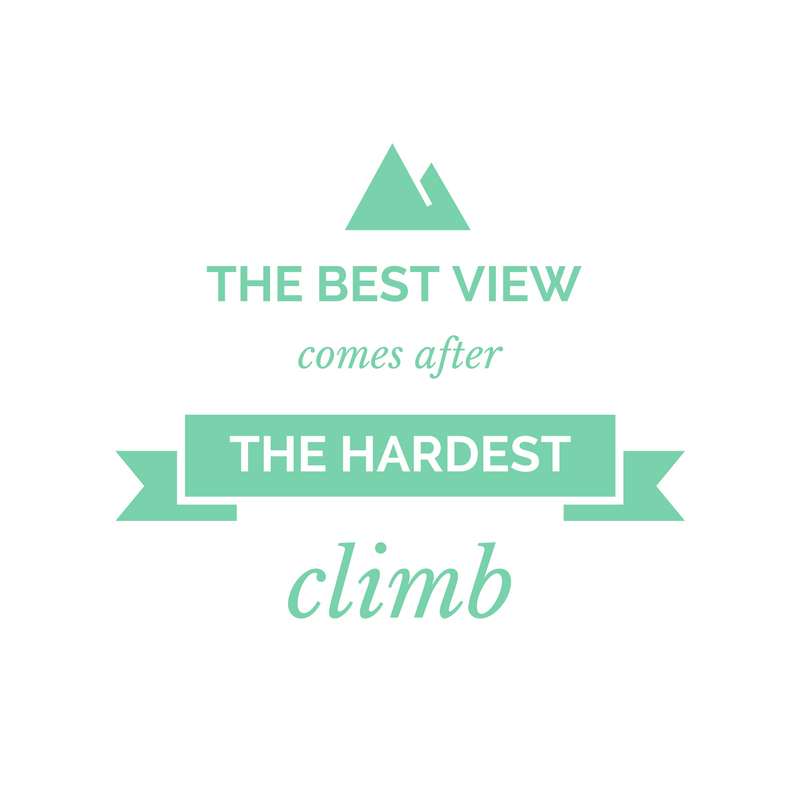Progress.
It means different things to different business owners.
Increasing sales by 10% for one small business may mean massive progress, whereas for the next, it could mean failure in relation to their objectives.
But one thing is for certain, everyone wants to make progress in what they are doing.
Whether it be growing sales, building new revenue channels, or just getting day-to-day tasks completed.
And to make this progress, we must be productive. We must consistently work towards our goals in an efficient, effective manner.
But how do you achieve consistently strong productivity?
A restless night or distractions can often cause your productivity to nosedive, so how do you pick your productivity back up-to-speed so you can maintain progress towards your goals?
Here’s 15 ways to improve your productivity as a small business owner.
They are techniques I regularly employ as I juggle my responsibilities as a husband, father, CEO of Vitalife Group, my other businesses, property, this blog and my Udemy course.
The following techniques help me to maintain progress in all areas, and also to enjoy the journey – ensuring I have ample time to spend in my most important and enjoyable roles as husband and father.
Check and Respond to Emails Just Twice a Day (Maximum)
One of my biggest distractions is emails.
I’m normally working in a web browser on my laptop, with my email tabs for various accounts open constantly.
As soon as a new email drops in, it’s too tempting to come away from what I’m doing and check what it is!
Whilst I haven’t yet broken this habit of checking (I can’t ignore the anxiety of missing an urgent email – since almost all my communication with staff and other people is by this method), I have implemented the discipline to drop whatever it is into my ‘follow-ups’ folder (provided it isn’t absolutely urgent) and deal with my follow-ups for 1 hour at the end of each day.
This ensures that I can stay focused on what I’m working on, and am not constantly switching my attention to dealing with emails throughout the day.
When you allow your emails to take-over your day, you’ll reach the end of the day and not really feel like you have achieved anything – because you’ll have been flitting from micro-task to micro-task and not working towards your own, higher-level objectives for your business.
Not only do emails cause distraction and affect your immediate productivity, they also eventually lead you to lose motivation as you never get to feel the sense of achievement you gain when you complete a task or tick-off a to-do each day.
Let them wait for a reply. Your own objectives are more important.
Consistently Work Towards an Actionable To-Do List
To-Do lists allow you to direct your daily activities in-line with your higher-level business objectives.
They are effectively a bitesize, broken-down collection of micro-objectives that make up your longer-term business objectives.
Having a to-do list therefore not only guides you, daily, in the right direction, but it also helps to make longer-term objectives seem more achievable and maintains motivation as you work towards them since you can see real progress as you tick-off your to-dos.
I cover building actionable to-do lists from your higher-level objectives in my 4-week business course.
Ensuring to-dos are actionable, and breaking them down as much as possible, maximises productivity by allowing you to focus on each specific task involved in meeting an objective, rather than wandering towards a vague high-level goal.
Try Not to Multitask
As with emails, attempting to perform more than one task at once is not good for productivity or motivation.
Although, admittedly, multitasking is sometimes unavoidable (especially when you’re working from home and have a toddler placing toys on your lap asking you to play as you type – which is happening as I speak!), you should actively try to focus on just one task at a time.
This is called ‘monotasking’.
The best analogy I can give for this is when you attempt to download several large files at once.
If you just downloaded one file at a time, you would achieve 1, 2, or maybe 3 large downloads in a day. Whereas if you attempted to download 10 all at once, you wouldn’t achieve a single download in that day.
Your attention and productivity similarly has its own bandwidth – spread it too thin, and you won’t see any real achievements on a daily basis, which in-turn damages your motivation by never reaching a sense of achievement in that day.
But focus on just one task at a time, you might get several to-dos done in the day, which in-turn boosts motivation as you see tangible progress each day.
Don’t Procrastinate
Jump in, and adapt.
If you sit thinking about a task for too long, you’ll never start it.
We’ve all got that to-do on our list that we’ve been putting-off because it’s either not enjoyable, too big, or you just don’t know where to begin with it.
You’ll be surprised at how quickly you can actually clear this from your list however, if you just make a start on it, and give it your full attention for the day.
I’m often the same with my blog posts. Each month my strategy is to build a list of blog titles for the coming month, and I then flesh my content out from these titles.
It’s easy to come up with the titles, making them engaging and relevant to my audience, but it’s harder to start typing the actual content. I have writer’s block, and don’t know where to begin. Partly out of wanting to achieve perfection and keep my content engaging, and partly from just not having my mind properly on the task and the topic.
The way I deal with this?
I just force myself to start typing.
More often than not, it will snowball from here. New ideas come to me as I type and focus my mind on each micro-topic in the post, and before I know it, I’m 2,000 words in and forcing myself to bring things to a close so it’s not too long-winded!
So just dive in, it doesn’t have to be perfect, you don’t even really need to know what you’re doing – adapt and learn as you go, and it will all come together faster than you think.
Stay Hydrated
If you aren’t properly hydrated, you lose concentration.
Water is the single most important resource for the human body, and when it becomes depleted, your performance can fall – both in a mental and a physical capacity.
I often rely on warm drinks like tea (matcha green tea, in particular – which is great for concentration) and decaffeinated coffee for my hydration, getting through 8-10 cups per day.
But it’s also great if you mix in some drinks of water and juice too.
Just stay away from the sugary, fizzy stuff and too much caffeine – these will have you ‘crashing’ later in the day and caffeine is a diuretic, which means it can dehydrate you if you have too much.
Delegate and Automate
Rely on staff and software to conduct day-to-day, repetitive activities so that you can focus your time and energy on value-adding activities only.
If you find the right staff and put people in the right roles, you shouldn’t have to spend too much time supervising their work – just ensure they remain motivated and interested in their role, and pay mind to their own personal objectives and interests, and they’ll do what you need them to do.
If possible, automation is the preference to delegation – if you can automate a business process then, aside from the initial investment in software or machinery, you should see ongoing cost savings from labour-intensive, alternative solutions. Plus, automation removes the possibility of human error in the process.
Either way, try to make your day-to-day activities redundant through delegation and automation, and you’ll see your productivity and business progress soar, as you start to focus on more value-adding activities.
I cover more about automation and delegation in the 4th week of my online business course.
Swerve Meetings that Don’t Align with your Objectives
Re-assess the meetings you have in your calendar. Do you really need to attend these?
If they don’t directly relate to your business objectives, cancel them.
Meetings are just as distracting as emails, except even more time consuming and therefore costly.
For me to have a face-to-face meeting with somebody, it HAS to present the possibility of something major, aligned with my business objectives – or it won’t happen. I value my time too much to spend it in meetings that are purely for the benefit of the other party, or that are not valuable enough to my business.
Don’t have meetings for meeting’s sake.
Get 8 Hours of Sleep a Night
Sleep deprivation can affect your decision-making abilities, and has a negative impact on your productivity and concentration.
Ensure you go to bed early enough, or sleep in long enough, to get 8 hours of rest each night.
And if this is totally impossible, find time to take a nap the following day to make the hours up.
Sleep gives your body and mind time to recover and repair. If you don’t give your body enough time to do this, your productivity, and eventually your health, will suffer.
Stay Fit, Healthy, and Active
Feeling good about yourself and being 100% fit and healthy has a huge impact on your productivity.
If you don’t have good health, you will be constantly hindered by illness and ailments, and it is impossible to maintain 100% productivity in this situation.
Staying fit, healthy, and active takes investment – in both time and energy. You need to plan meals, prepare fresh food, and take time to exercise and workout.
Granted, this steals time that you could otherwise spend on your business, but would you rather spend 20% of your time dedicated to staying fit and well so that you can maintain 100% productivity, or devote 100% of your time to your business alone, and only achieve 20% productivity due to illness and poor performance?
With full productivity and focus, you can achieve much more in a shorter period of time – so don’t worry about dedicating time to your health and wellness, your business will benefit from this too.
Eat Well and Supplement your Diet
Eating well and supplementing your diet where necessary, are just as important as exercise in terms of maintaining your health.
Wherever possible, try to eat fresh fruit and veg, and maintain a healthy balanced diet.
If you’re aware of any nutrients that you are lacking, then supplement them – to ensure your body has everything it needs to achieve optimal performance.
I personally take CoEnzyme Q10 for heart health, Magnesium Glycinate, a Probiotic for digestive health, Potassium for effective muscle function, and Omega 3,6,9 for my good fats.
Being the owner of www.vitalifehealth.com and www.lovehealthhatewaste.com helps when it comes to understanding what supplements you need to fill the gaps in your diet, but with a little research you’ll be able to figure out a supplement regime for yourself too.
Take Regular Breaks
Taking regular breaks, especially from your computer screen, helps maintain concentration and also allows you to recharge and come back with fresh ideas.
I often take this approach when blogging too. Leaving a post midway to do other things means that when I come back, I’ve usually had some other fresh ideas to include, and it allows me to read what I’ve already written with fresh eyes – so I can spot any changes that should be made.
Don’t be Afraid to Work Unconventional Hours
When you’re running your own small business, and especially if you also have a young family (like me), 9-5 hours go out of the window.
You may need to break-off in the middle of the day for a family event, for the gym or a run, or for a walk, to pick the kids up or drop them off at school, to take them swimming – whatever it may be.
In a typical day I get around 3 solid hours of work done early in a morning, then I’ve got other commitments that break my day up, so I typically only solidly work in 2 or 3 hour blocks, with gaps in-between for the gym, for family, for going for a walk, or anything else.
I probably average around 6-7 hours of work per day, but it’s all broken-down into chunks of 2-3 hours a time.
Provided you are 100% productive in the hours you’re working, you shouldn’t even need to work 9-5 each day to do what you have to do. And if you are working more than this, and the weekends, then you seriously have to address your productivity at work and your work-life balance.
Take a Holiday
Taking a break from work can give you completely fresh perspective and new ideas – and it also helps to recharge your battery, allowing you to come back with optimum productivity.
I’ve had my best business ideas whilst I’ve been on holiday, and I’ve come back with more motivation than when I went, because I have new, exciting things to experiment with.
Make Sure You’re Doing what you Love to do
Ultimately, make sure you’re still doing what you love.
I’m a huge supporter of following your dreams and only doing something that you have a true passion for. You spend the majority of your life working, so you might aswell spend it doing something you love, right?
The reason your productivity may be falling is because you are no longer enjoying what you are doing.
If this is the case, take a short break away from what you are doing and re-assess what you want to be doing.
If you can’t realign yourself within your current business to focus on your passion and the reason you first started your business, then don’t be afraid to admit that what you are doing is no longer enjoyable, and move-on.
Don’t become trapped doing something you hate – you’ll become depressed.
Break free. It may be painful in the short-term, both mentally and financially, but provided you know what your true passion is, and what you want to spend your time doing, then it will be much more rewarding in the long-term to focus on what you love to do.
Don’t Lose Sight of the Bigger Picture
Your business isn’t everything. Life has a wider scope than your business.
Make sure you dedicate enough time to family, friends, adventure, travelling, and leisure pursuits – these moments not only allow you to recharge, they also give fresh perspective and allow you to enjoy life as a whole – rather than constantly obsessing over your business.
Conclusion
Often, the things we think distract us from productivity are the very things that help to boost and maintain it.
Take frequent breaks from work, dedicate time to leisure and fitness activities, get plenty of rest, and don’t work silly hours.
Sure, you could work 6am-9pm 7 days a week on your business, and you might see positive results for a week or so. But this isn’t sustainable. You’ll burn-out faster than you think.
Don’t feel guilty for doing the things you love.
Having your own business brings with it freedom that those working a 9-5 do not share, but often it is the fear of guilt that ties small business owners into relinquishing this freedom, and they end-up working more hours than a regular employee, often for less reward.
It’s the guilt of not trying your best, not giving your business your all, and of what it could achieve if you dedicated 100% of your time and effort to your business alone.
Well, I’m here to tell you that its not quite as simple and linear as it seems.
Human emotion and mechanics are involved – and wherever these play a role, things are never completely straightforward.
Giving 100% of your time and effort to your business alone, does not generate as much growth or progress as it would if you gave 50-70% of your waking time to your business, and the rest to other things you love to do.
When you nourish your mind and body with the things it needs to maintain productivity, your business will also be rewarded in-turn.
Focus on yourself, feed your passions, and give your body what it needs – and the rest will take care of itself.
If you have any other tips for boosting productivity, please share them in the comments below.





